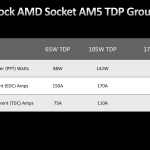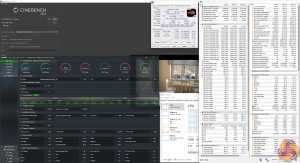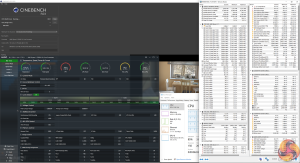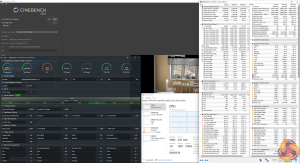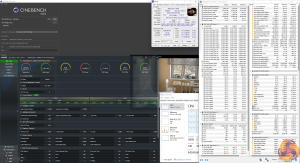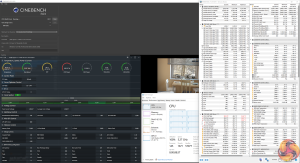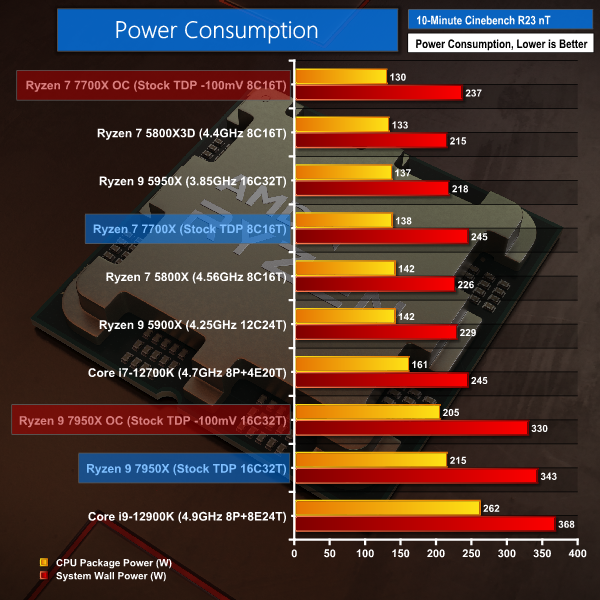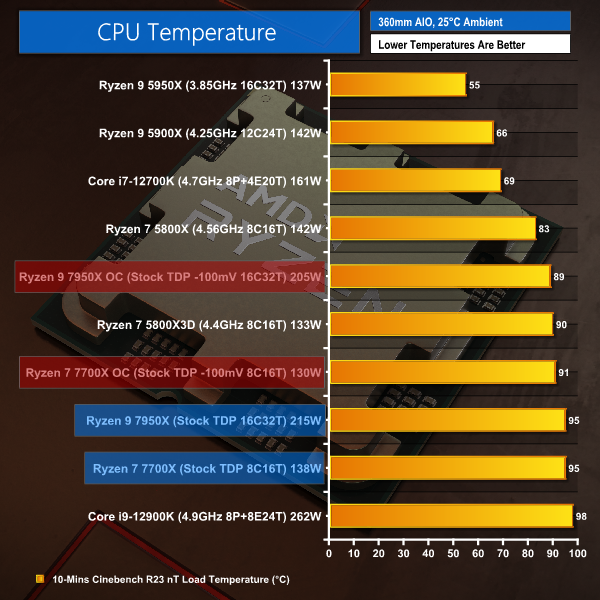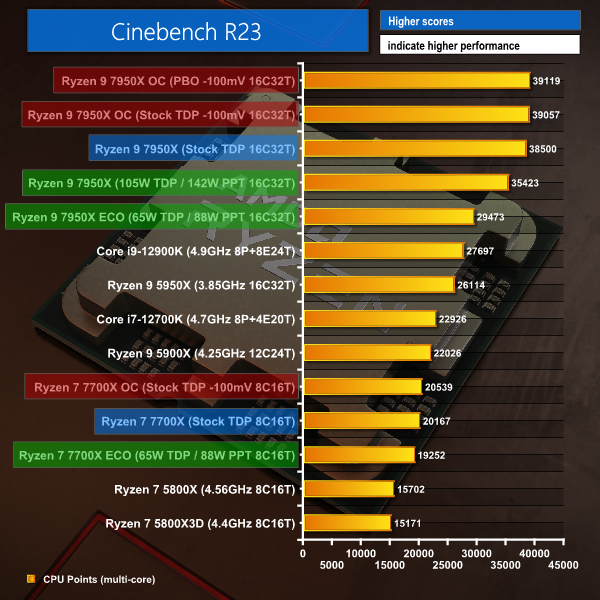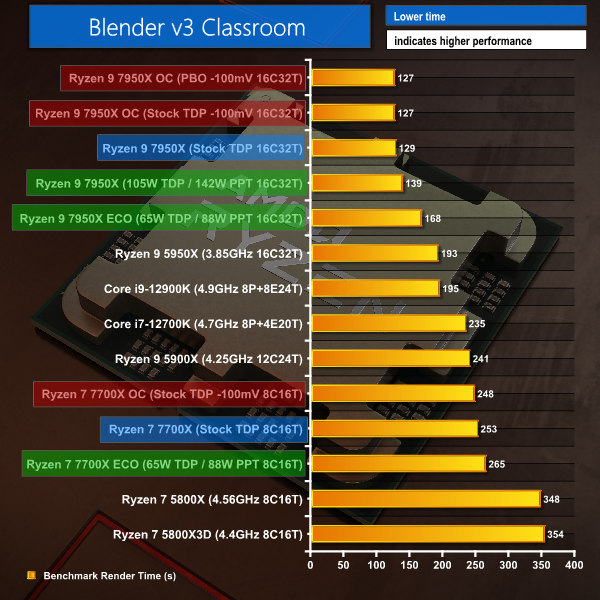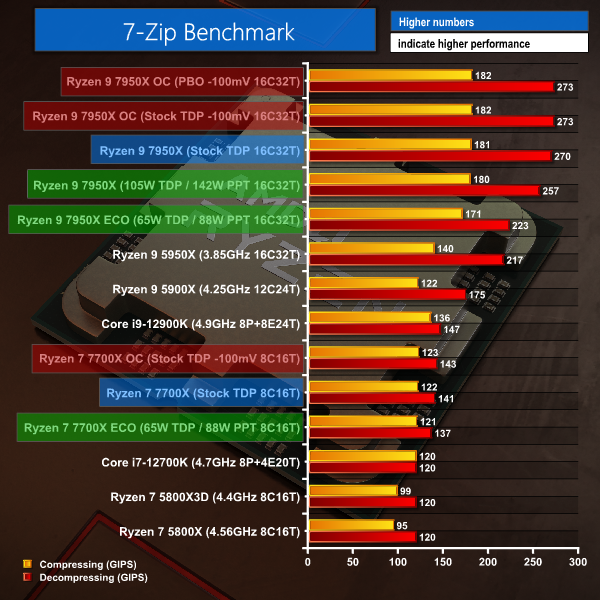With both Ryzen 7000 processors running at 95C even under stock conditions, we clearly had no real headroom for manual overclocking – we’d already hit our thermal limits.
As such, our tuning formula focussed on two factors;
- Reduced TDP modes to see how each chip operated under more tolerable power limits
- Undervolting, to see if we could reduce the thermal load in order to force PB2 to give us higher frequency
Eco Modes:
For the reduced power modes, we set the Ryzen 9 7950X at 105W TDP and 65W TDP.
105W TDP – which is 142W package power – had the chip running at roughly 4.7GHz averaged across the sixteen cores. That’s a roughly 300MHz decrease versus the stock levels, which is certainly very tolerable.
65W TDP – which is 88W package power – had the chip running at just under 3.9GHz average.
Almost 4GHz on 16 high-performance cores for 88W of package power is also very tolerable, particularly for workstation or home server type usage.
The Ryzen 7 7700X was set to 65W TDP Eco mode, which once again delivered 88W of package power. This resulted in an all-core clock speed of around 4.95GHz – just over a 200MHz drop versus stock settings.
Undervolting
For undervolting, we did this in the UEFI by applying a -100mV offset to the processor.
For the Ryzen 9 7950X, this resulted in a frequency uptick of a just under 150MHz during Cinebench all-core loading. The chip now operated slightly below 5.2GHz on all 16 cores.
For the Ryzen 7 7700X, the same -100mV undervolt resulted in a 100MHz improvement so that the processor now ran at 5280MHz sustained.
It’s worth noting that applying Precision Boost Overdrive whilst undervolting delivered no tangible improvement to frequencies during our testing.
Manual Overclocking Power and temps
Package power dropped by around 10W for both Ryzen 7000 chips when undervolted by 100mV. And alongside the frequency bumps, both processors also manage to stray away from their 95C limits.
It was the combination of reduced power draw and operating temperature that allowed for the frequency gain via undervolting.
Manual overclocking performance
Undervolting results would imply that there is a smidgen more performance headroom to be squeezed out of both chips as BIOS updates improve voltage targets. But it’s the reduced power and temperature numbers that are greater benefits.
Reduced TDP modes are clearly where the Ryzen 9 shines.
At 105W TDP or 142W allowed package power in Cinebench – the same as the Ryzen 9 5950X it replaces – AMD’s new flagship is 28% quicker than the Core i9-12900K and 36% faster than the Zen 3 16-core.
Even when severely limited to 65W TDP and 88W package power, the 7950X still maintains a healthy lead over the Core i9 and Ryzen 9 5950X – that’s remarkable!
The Ryzen 7 7700X also fairs well at reduced power levels by maintaining a high percentage of its stock performance. But that chip’s market segment has far more direct contenders. Thus the added power of a 105W TDP is necessary to better compete with the Intel 12th Gen and AMD Ryzen 5000 challengers.
Be sure to check out our sponsors store EKWB here
 KitGuru KitGuru.net – Tech News | Hardware News | Hardware Reviews | IOS | Mobile | Gaming | Graphics Cards
KitGuru KitGuru.net – Tech News | Hardware News | Hardware Reviews | IOS | Mobile | Gaming | Graphics Cards


